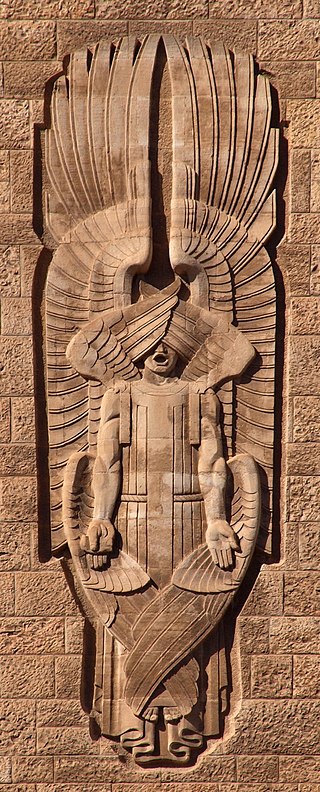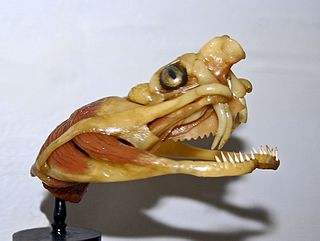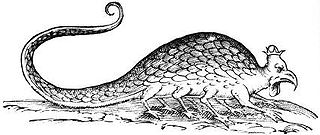
A seraph is a celestial or heavenly being originating in Ancient Judaism. The term plays a role in subsequent Judaism, Christianity, and Islam.

Cerastes cerastes, commonly known as the Saharan horned viper or the desert horned viper, is a venomous species of viper native to the deserts of Northern Africa and parts of the Arabian Peninsula and Levant. It is often easily recognized by the presence of a pair of supraocular "horns", although hornless individuals do occur. Three subspecies have been described.

Echis carinatus, known as the saw-scaled viper, Indian saw-scaled viper, little Indian viper, and by other common names, is a viper species found in parts of the Middle East and Central Asia, and especially the Indian subcontinent. It is the smallest member of the "big four" Indian snakes that are responsible for causing the most snakebite cases and deaths, due to various factors including their frequent occurrence in highly populated regions, and their inconspicuous nature. Like all vipers, the species is venomous. Two subspecies are currently recognized, including the nominate subspecies described here.

Echis coloratus, known as the painted saw-scaled viper, painted carpet viper, Burton's carpet viper, and by other common names, is a highly venomous viper species endemic to the Middle East and Egypt. No subspecies are currently recognized.

Snake venom is a highly toxic saliva containing zootoxins that facilitates in the immobilization and digestion of prey. This also provides defense against threats. Snake venom is injected by unique fangs during a bite, whereas some species are also able to spit venom.

"Asp" is the modern anglicisation of the word "aspis", which in antiquity referred to any one of several venomous snake species found in the Nile region. The specific epithet, aspis, is a Greek word that means "viper". It is believed that aspis referred to what is now known as the Egyptian cobra.

Snake charming is the practice of appearing to hypnotize a snake by playing and waving around an instrument called a pungi. A typical performance may also include handling the snakes or performing other seemingly dangerous acts, as well as other street performance staples, like juggling and sleight of hand. The practice was historically the profession of some tribesmen in India well into the 20th century but snake charming declined rapidly after the government banned the practice in 1972. Snake-charmer performances still happen in other Asian nations such as Pakistan, Bangladesh, Sri Lanka, Thailand and Malaysia. The tradition is also practiced in North African countries of Egypt, Morocco, and Tunisia.

Echis is a genus of vipers found in the dry regions of Africa, the Middle East, India, Sri Lanka and Pakistan. They have a characteristic threat display, rubbing sections of their body together to produce a "sizzling" warning sound. The name Echis is the Latin transliteration of the Greek word for "viper" (ἔχις). Like all vipers, they are venomous. Their common name is "saw-scaled vipers" and they include some of the species responsible for causing the most snakebite cases and deaths in the world. Twelve species are currently recognized.
Echis leucogaster, also known as the white-bellied carpet viper or the Roman's saw-scaled viper, is a viper species endemic to West and Northwest Africa. Its scientific name derives from its white (leuco-), unmarked belly (gaster). like all other vipers, it is venomous. No subspecies are currently recognized.
Echis ocellatus, known by the common names West African carpet viper and ocellated carpet viper, is a highly venomous species of viper endemic to West Africa. No subspecies are currently recognized.
The wildlife of Mali, composed of its flora and fauna, is widely varying from the Saharan desert zone to the Sahelian east–west zone, to Mali, a landlocked francophone country in North Africa; large swathes of Mali remain unpopulated but has three sub-equal vegetation zones; the country has Sahara Desert in the north, the Niger River Basin at its center and the Senegal River on the south.

In European bestiaries and legends, a basilisk is a legendary reptile reputed to be a serpent king, who causes death to those who look into its eyes. According to the Naturalis Historia of Pliny the Elder, the basilisk of Cyrene is a small snake, "being not more than twelve inches in length", that is so venomous, it leaves a wide trail of deadly venom in its wake, and its gaze is likewise lethal.
Serpents are referred to in both the Hebrew Bible and the New Testament. The symbol of a serpent or snake played important roles in the religious traditions and cultural life of ancient Greece, Egypt, Mesopotamia, and Canaan. The serpent was a symbol of evil power and chaos from the underworld as well as a symbol of fertility, life, healing, and rebirth.

Snake Cell Andhra Pradesh is a voluntary non-profit organisation working for the Conservation of Reptiles. It rescues snakes from residential areas of Hyderabad and Secunderabad.
Ten Deadliest Snakes with Nigel Marven is a twelve-part wildlife documentary series from 2013 to 2017. It began airing on Eden Channel in 2013. Seasons 1 and 2 were also broadcast on Animal Planet Europe, while season 3 was premiered on Nat Geo Wild UK and later screened on Nat Geo Wild Europe & Africa in 2017. It is presented by Nigel Marven, who travels around the world and in each hour-long episode he counts down his list of ten deadliest snakes in each different country or continent. The series is produced by Image Impact.










